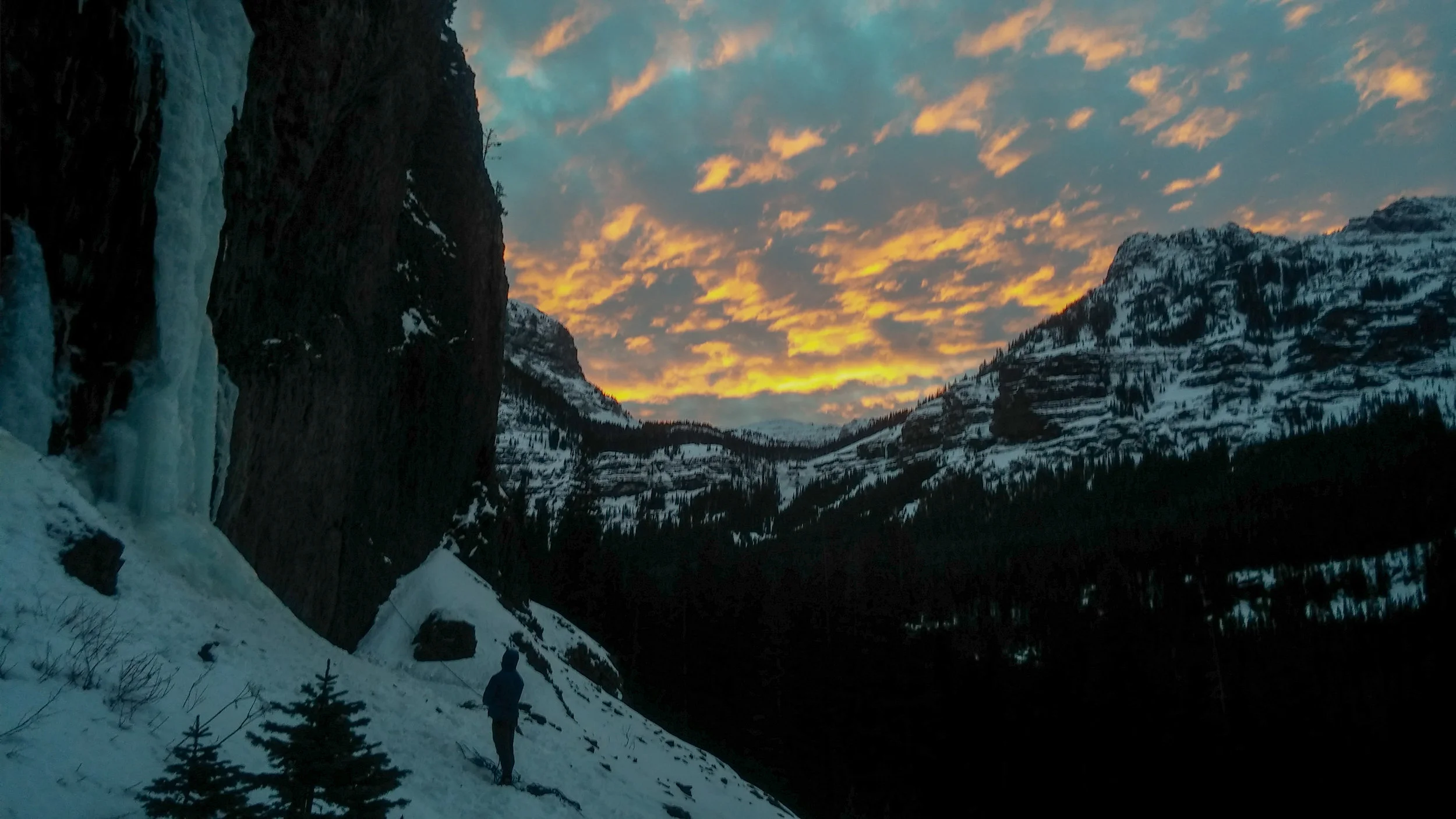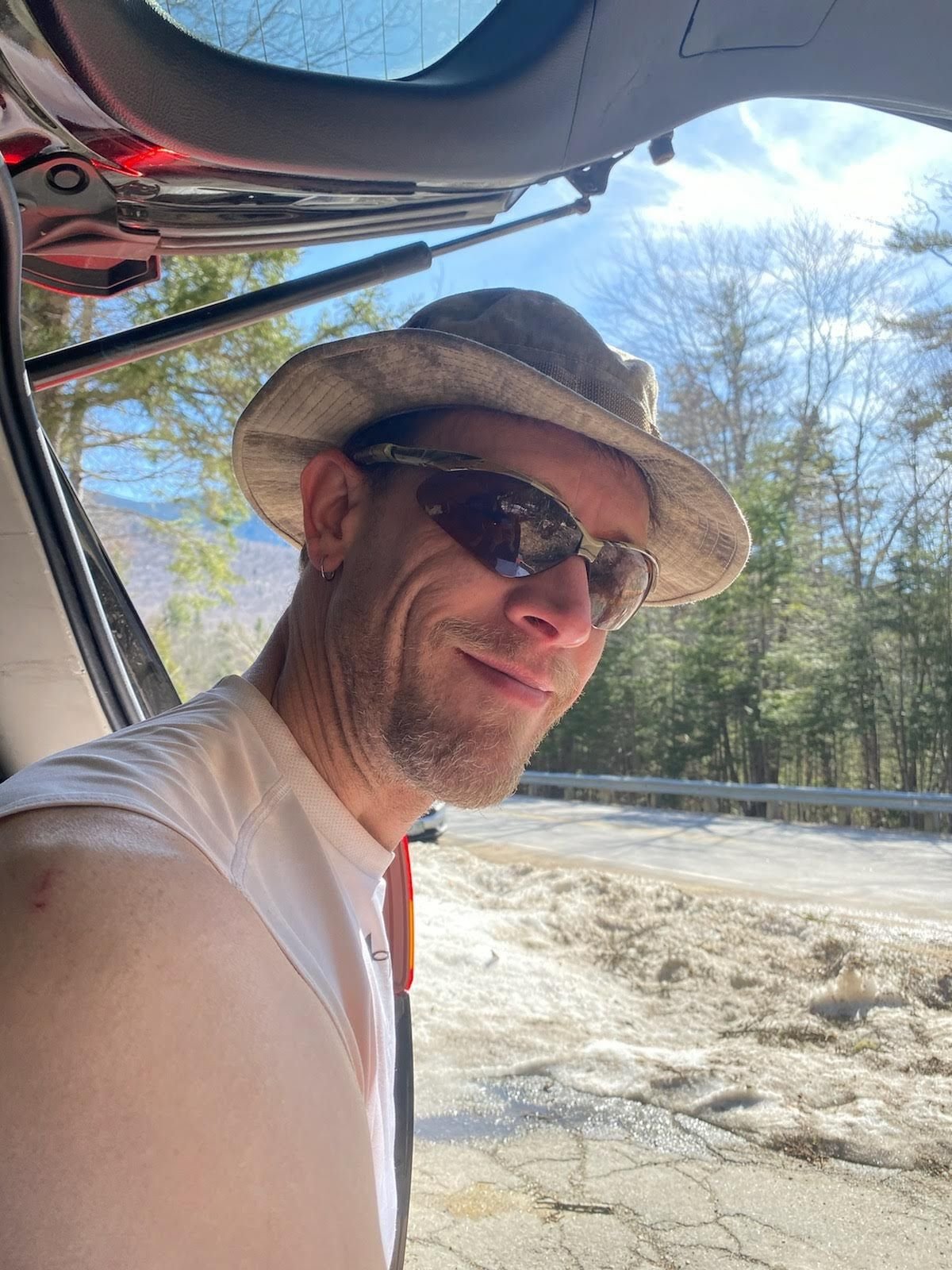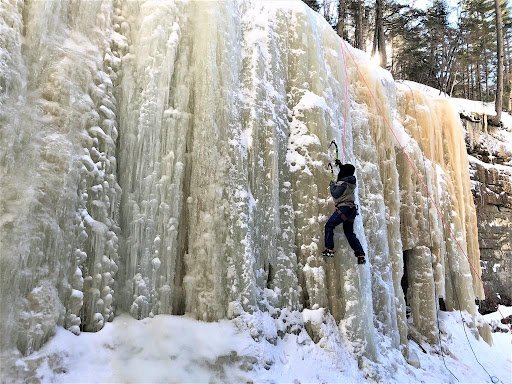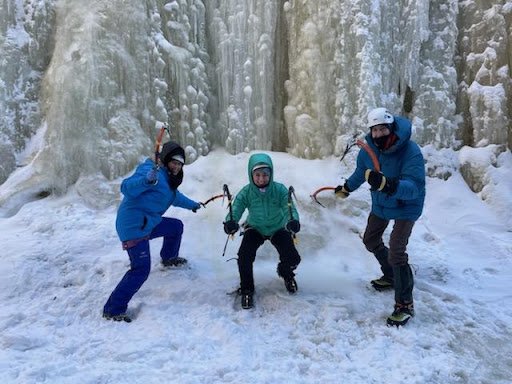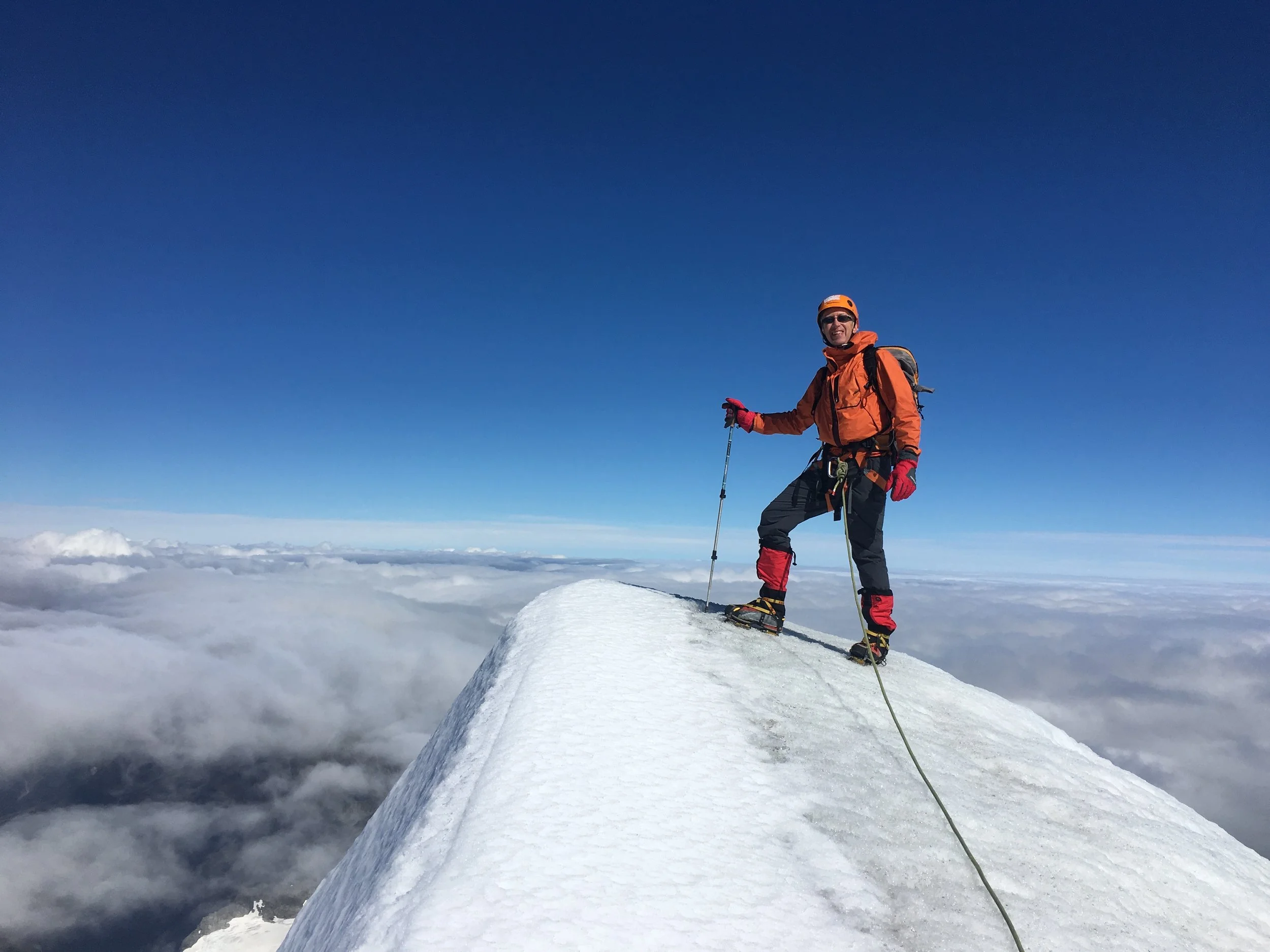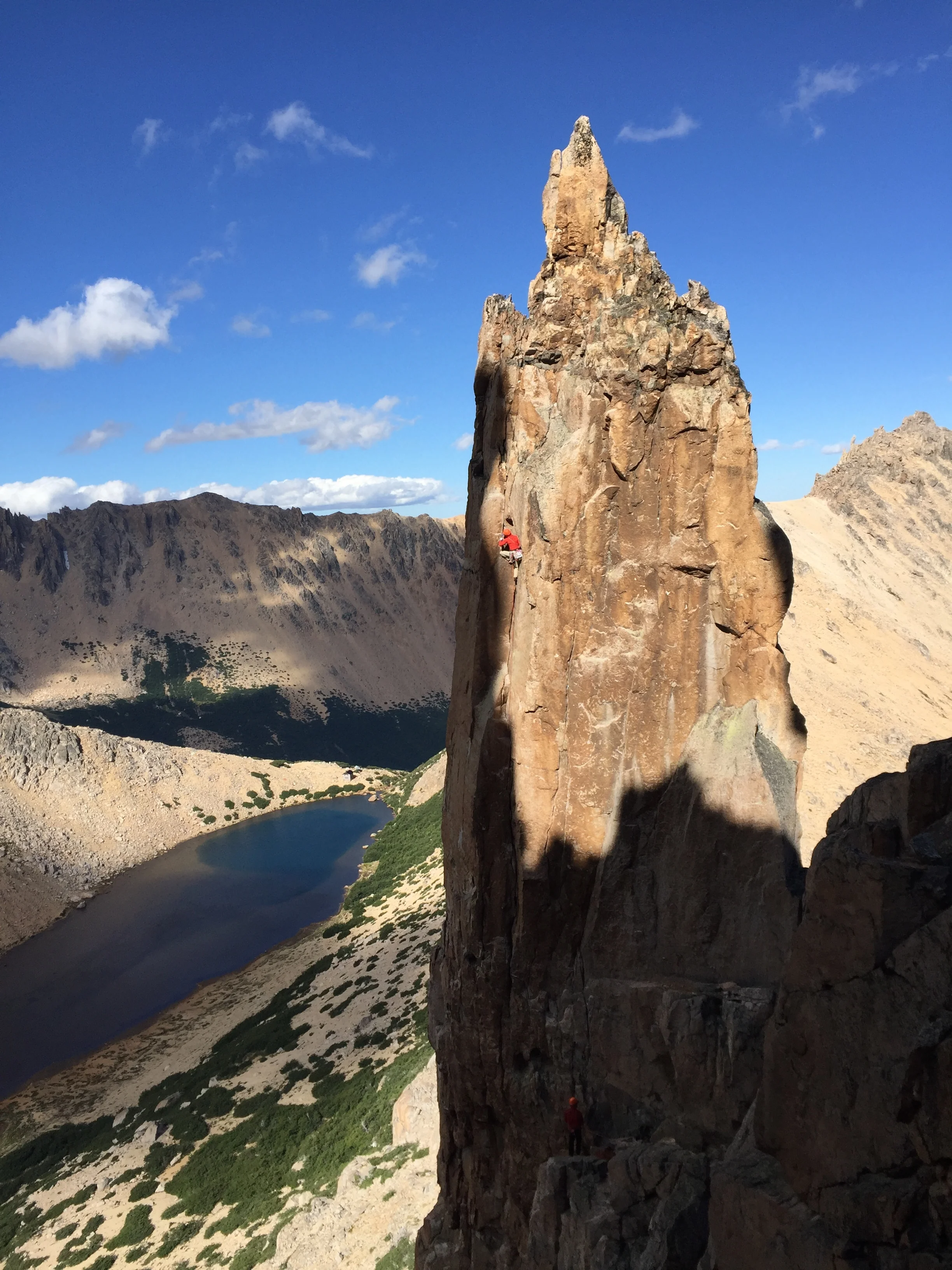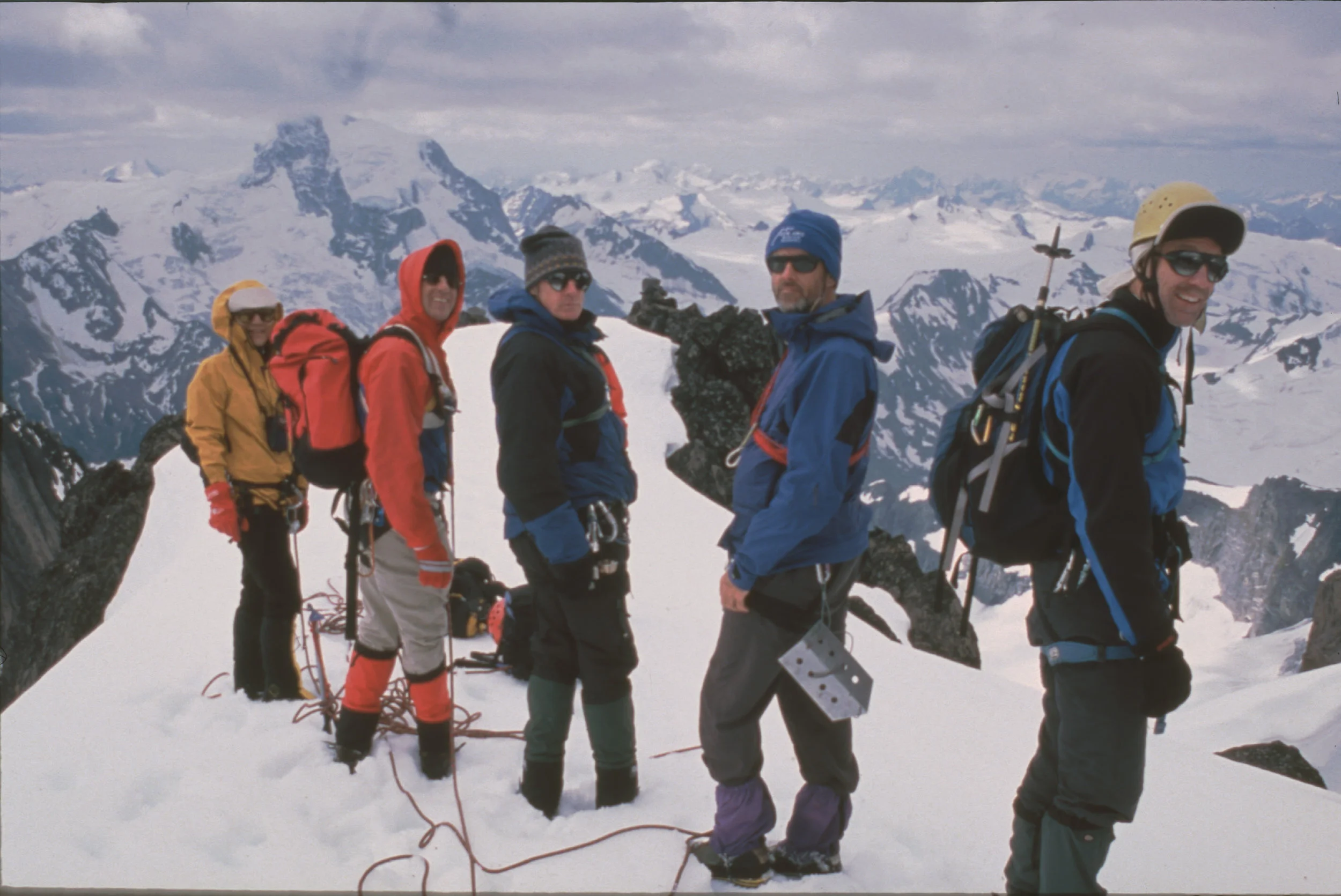Shortly after receiving the Craigen Bowen Memorial Scholarship, a few people asked if I was going to use it for the 2022 Ice Program. I hadn’t really considered myself becoming an ice climber, though I had tried it once the previous winter, and enjoyed myself. I was an avid winter hiker of NH’s 4k footers, a x-country skier, and obviously enjoyed rock climbing. Ultimately, I decided “sure, why not?”. In an attempt to go all in, I signed up for a single pitch craggin' session with Western MA AMC, Boston AMC 2022 Ice Program, 3 Open Cabin Weekends, and made plans with my ice climber friends in Maine and Vermont to climb on free weekends. By late December 2021, I had plans to ice climb every weekend from the middle of January to the middle of March. It was looking to be a solid first ice season.
“Screw this!”, I said aloud to myself. My car’s thermometer read -18°F. "What the hell did I get myself into?". The night before we received an email stating the ideal temp to climb was 15-25°F and to dress warmly. I gave a deep internal sigh as I slumped down in my seat, did I really want to do this? I was running late since I left early that morning instead of my original plan to go up the night before. My coworker had tested positive for covid, even though I had a negative result from a rapid test, did I want to chance exposing others? Plus, it was really cold. I figuratively got cold feet and continued driving past the Arethusa Falls parking lot to get a breakfast sandwich and hot coffee at Wicked Bagel. After a few moments of silent chewing and internal debate, I decided to go hiking in my mountaineering boots and crampons instead of joining Western MA AMC to climb. I internally justified it would allow me to check the fit of my boots and crampons, break them in, and get used to walking in them.
I decided to hike 4310’ Mt. Pierce. I drove north, passed Arethusa Falls once again, continued on and parked at the Highland Center. I put on my gear, got outside and started to go. Although awkward at first, I got used to walking in boots and my crampons pretty quickly. Overall, I had a pleasant hike, and didn’t rip a hole in my pants with my crampons (an improvement from the previous year). It was sunny, the air was crisp, but it was really cold. I had a pair of wool liners, a shell mitten, and chemical warmers, but my hands and feet were cold the entire day even though I was moving pretty continuously and consistently. I was not dressed appropriately for climbing that day. Even though I felt lame for bailing on climbing, I ticked off a winter 4K footer, tested gear, and learned that other gear was inappropriate and/or insufficient. Overall, I felt content that I made the right decision and took a step forward in my ice climbing journey.
The first of two Ice Program Weekends had arrived. As my fellow coworkers, and typical Bostonians were planning to hunker down for the pending snowstorm/blizzard expected Saturday, I was standing over two backpacks with clothing, gear, and snacks strewn about as I tried to strategically fit everything I would want for the weekend. I ended up reaching out to some familiar faces from the rock program, which was comforting, and together headed north to connect with other gumby ice climbers.
I really enjoyed the structure of the first day, with the breakout groups for skill learning and especially benefited from starting to climb with no tools, then progressing to 1, and ultimately 2 tools. At the end of the day I felt more confident walking around in crampons off of well groomed trails, understood ice screws/ anchors, and was glad I successfully self arrested. I was still a little wobbly and precarious with my kicks and swings and hadn’t really felt a good stick yet. I opted out of the higher lines at the Walk in the Forest to stay at the kiddie routes to focus on my form, determined to get at least one good kick and swing, however that day was not the day for me.
On the second day I went to North End Cathedral with Tom, Sarge, and Arianna. I knew Sarge and Arianna from the Rock Program and Tom from listening to him wax poetic about the Black Dike as we climbed Whitney Gilman a few summers before. Arianna, Sarge and I set up a line that was unnamed between Thresher and North End Slab, since all the other areas were being used. I got a foot or so off the ground and Arianna said, “something doesn’t look right- does your crampon feel solid?”. I responded “not really” just as it popped off with my next kick, and Sarge firmly but gently stated “get down, come over here, and take those off”. Sarge quickly and quietly adjusted my crampons to better fit my boots and I tried again. My kicks felt better, still somewhat precarious, but better. Then I tried climbing North End Slab to our right and felt a vibration go up my arm as my pick sunk into the ice. Finally- a solid swing! The entire rest of the day, I felt good. My kicks improved with my better fitting crampons and I got solid sticks in the ice with my swings, overall a successful first weekend.
In between the first and second program weekends, I went to VT to climb around Smuggler’s Notch. We ended up getting turned away since parking was full from skiers, but ultimately climbed nearby in Bolton. There I got exposed to my first WI 4 icicle columns and mixed routes. I also learned how to quickly de-ice a frozen rope with a carabiner and a munter hitch. Then we went back to a cozy fire at the cabin to dry out gear, thaw out fingers and toes, change my crampons from two to one spike, and decide what I wanted to sign up for the following Ice Program weekend over a beer. I wasn’t sure if I was ready for multi pitch climbing. To me that was synonymous with Pinnacle Gully on Mt. Washington or Black Dike on Cannon, both of which sounded fun in theory, but I was still nervous to be too much of a gumby to not be a drag or wet blanket. My hands were getting super cold, and I was still experiencing screaming barfies after every route I was doing. I knew I had some fine tuning to do for my layers and systems. I felt fairly competent at this point up to WI3, but mounted the struggle bus when I went into WI4 territory, which my VT friend gently suggested meant my form could use some improvement. Ultimately, I put down I would like to attempt easier multipitch up to WI3, but also have the opportunity to do single pitch/ top rope to get exposure on harder lines for the second program weekend.

